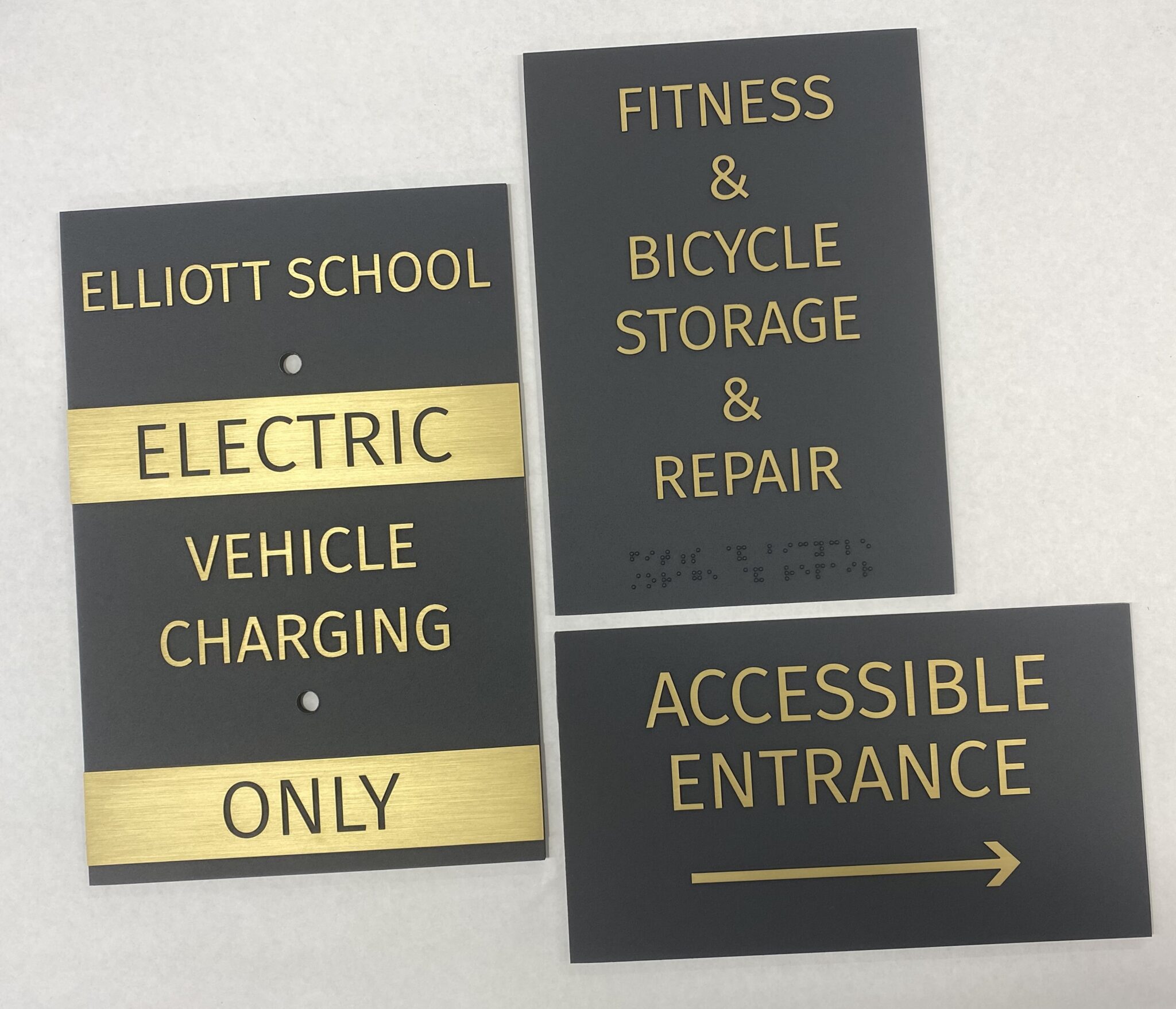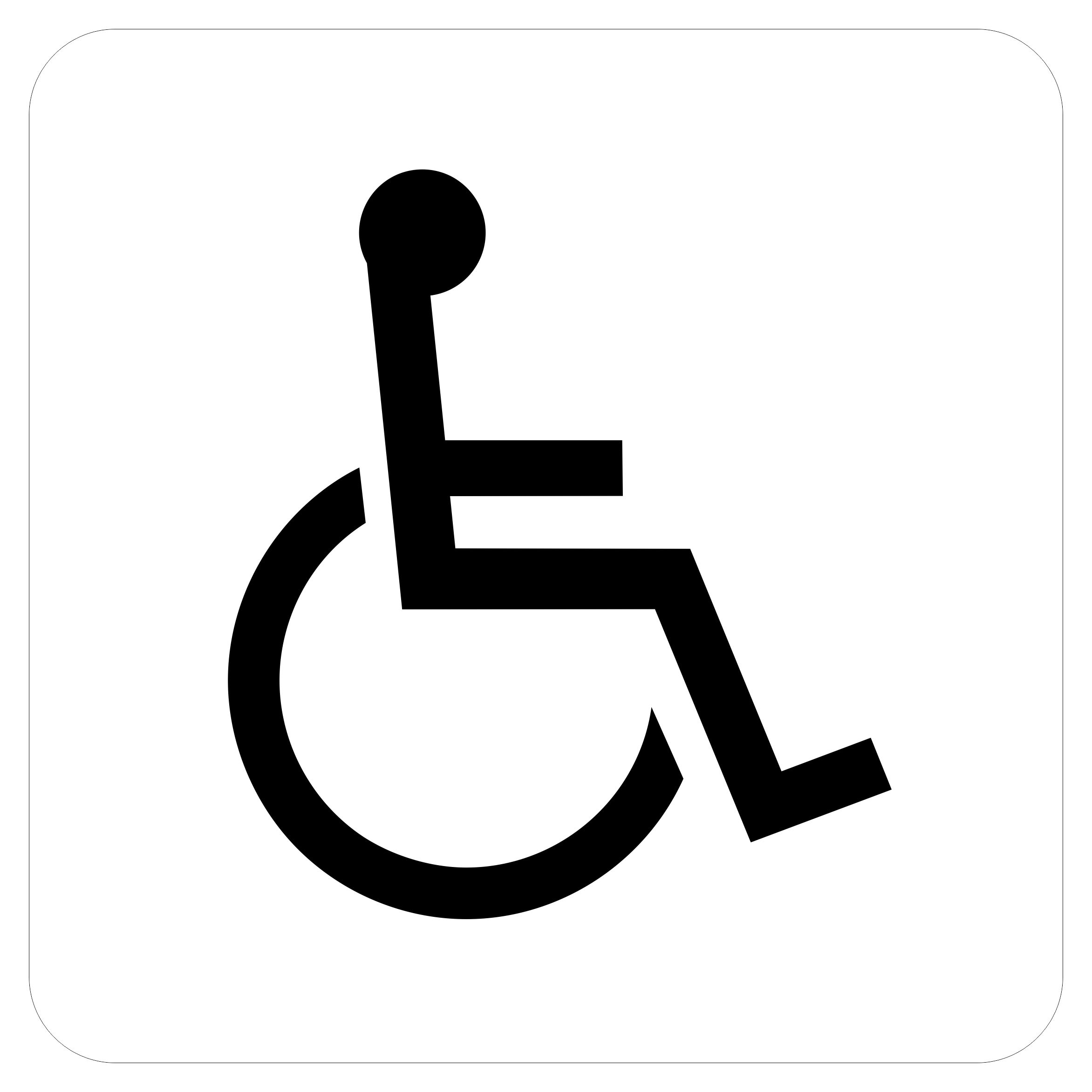Discovering the Key Features of ADA Indicators for Enhanced Ease Of Access
In the realm of availability, ADA signs serve as quiet yet powerful allies, making certain that areas are inclusive and accessible for individuals with handicaps. By integrating Braille and tactile elements, these indicators break obstacles for the visually damaged, while high-contrast shade plans and clear typefaces provide to varied visual requirements.
Importance of ADA Conformity
Ensuring compliance with the Americans with Disabilities Act (ADA) is important for promoting inclusivity and equal gain access to in public rooms and workplaces. The ADA, passed in 1990, mandates that all public facilities, companies, and transport solutions accommodate individuals with specials needs, guaranteeing they enjoy the exact same legal rights and possibilities as others. Conformity with ADA criteria not only fulfills legal responsibilities yet additionally enhances an organization's track record by showing its dedication to variety and inclusivity.
One of the key elements of ADA compliance is the execution of available signs. ADA signs are made to make sure that people with disabilities can conveniently navigate via rooms and structures.
Moreover, adhering to ADA guidelines can mitigate the risk of prospective penalties and legal effects. Organizations that fall short to conform with ADA guidelines may deal with lawsuits or fines, which can be both harmful and financially challenging to their public photo. Thus, ADA conformity is indispensable to cultivating a fair setting for everybody.
Braille and Tactile Components
The unification of Braille and responsive elements into ADA signs embodies the concepts of ease of access and inclusivity. These functions are essential for people who are visually damaged or blind, enabling them to browse public areas with better self-reliance and confidence. Braille, a responsive writing system, is necessary in providing composed information in a format that can be easily perceived through touch. It is normally positioned beneath the corresponding message on signs to make sure that people can access the details without visual support.
Responsive aspects prolong beyond Braille and include raised personalities and symbols. These elements are created to be discernible by touch, allowing individuals to identify area numbers, toilets, exits, and other crucial areas. The ADA establishes particular standards regarding the dimension, spacing, and placement of these responsive components to enhance readability and guarantee uniformity throughout different environments.

High-Contrast Color Design
High-contrast color schemes play a critical role in boosting the visibility and readability of ADA signs for people with aesthetic impairments. These schemes are vital as they optimize the difference in light reflectance between text and history, guaranteeing that indicators are conveniently discernible, even from a distance. The Americans with Disabilities Act (ADA) mandates the use of details shade contrasts to accommodate those with restricted vision, making it a crucial element of compliance.
The efficiency of high-contrast colors hinges on their capability to stand out in various illumination problems, consisting of poorly lit atmospheres and locations with glare. Normally, dark text on a light history or light text on a dark history is used to accomplish optimal comparison. Black text on a yellow or white history gives a plain aesthetic distinction that assists in quick acknowledgment and understanding.

Legible Fonts and Text Dimension
When taking into consideration the style of ADA signs, the selection of legible typefaces and appropriate message dimension can not be overstated. These aspects are crucial for making sure that indicators come to individuals with aesthetic impairments. The Americans with Disabilities Act (ADA) mandates that typefaces need to be sans-serif and not italic, oblique, manuscript, extremely attractive, or of unusual type. These needs help guarantee that the message is easily legible from a range which the personalities are appreciable to varied target markets.
According to ADA standards, the minimal message elevation ought to be 5/8 inch, and it must enhance proportionally with viewing distance. Uniformity in text size adds to a cohesive visual experience, assisting individuals in navigating settings efficiently.
Furthermore, spacing in between lines and letters is essential to readability. Adequate spacing prevents personalities from showing up crowded, enhancing readability. By sticking to these requirements, designers can dramatically improve availability, making sure that signage offers its designated function for all individuals, no matter of their visual abilities.
Efficient Positioning Methods
Strategic positioning of ADA signs is essential for optimizing availability and making certain compliance with lawful criteria. Effectively located indications direct individuals with specials needs effectively, assisting in navigation in public spaces. Trick considerations consist of height, distance, and presence. ADA guidelines state that indicators need to be installed at an elevation in between 48 to 60 inches from the ground to ensure they are within the line of view for both standing and seated people. This basic height array is critical for inclusivity, allowing mobility device customers and individuals of varying heights to gain access to info effortlessly.
Furthermore, signs have website here to be placed why not check here beside the lock side of doors to allow very easy identification before entry. This placement helps individuals find rooms and spaces without blockage. In situations where there is no door, indicators need to be situated on the local adjacent wall surface. Consistency in indicator placement throughout a facility boosts predictability, reducing confusion and enhancing general user experience.

Conclusion
ADA indicators play an essential duty in promoting access by incorporating attributes that attend to the demands of individuals with disabilities. These components jointly cultivate an inclusive setting, underscoring the value of ADA compliance in making certain equivalent accessibility for all.
In the realm of ease of access, ADA signs serve as silent yet effective allies, making certain that spaces are comprehensive and accessible for people with handicaps. The ADA, established in 1990, mandates that all public centers, companies, and transport solutions suit individuals with specials needs, guaranteeing they appreciate the exact same legal rights and chances as others. ADA Signs. ADA indications are created to guarantee that people with handicaps can conveniently navigate with structures and areas. ADA guidelines specify that signs need to be installed at an elevation in between 48 to 60 inches from the ground to guarantee they are within the line of sight for both standing and seated individuals.ADA indicators check my blog play a vital function in advertising availability by incorporating functions that resolve the demands of people with handicaps